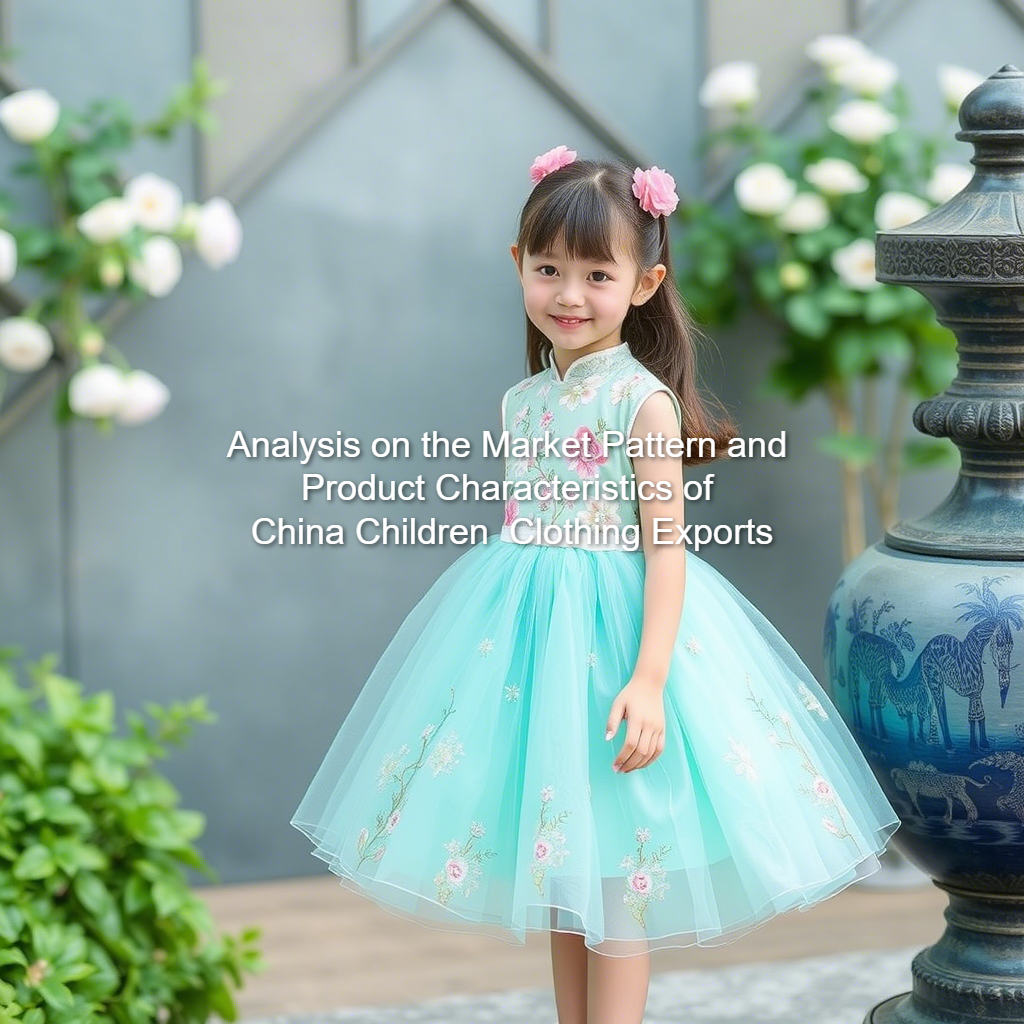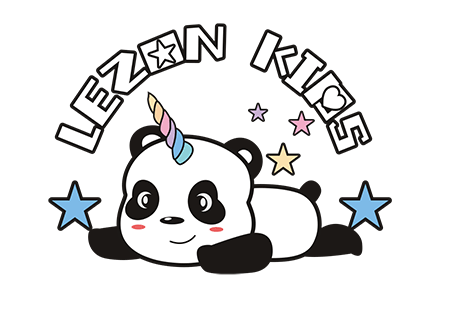2025-07-11
Based on customs data and market dynamics, China’s children’s clothing exports show the characteristics of “total growth and structural optimization”. From January to November 2023, the export value to major global markets reached 29.15 billion US dollars (a year-on-year decrease of 26.2%, but the decline was smaller than the industry average), with the five major markets of North America, Europe, Southeast Asia, the Middle East, and South America accounting for over 80% of the total. The following analysis is carried out from two dimensions: market characteristics and product trends:

analysis-on-the-market-pattern-and-product-characteristics-of-china-children-clothing-exports
I. Export Situation and Demand Characteristics of Major Markets
1. North American Market: Structural Adjustment Driven by Brands
- Customs Data: From January to November 2023, US imports of children’s clothing from China decreased by 26.2% year-on-year, but exports of sports functional children’s clothing grew against the trend by 12%.
- Market Characteristics:
- High-end and Sustainability: The demand for organic cotton and recycled polyester fabrics accounts for over 30%. For example, GAP’s “Planet Aware” series uses 100% recycled materials.
- Scenario Segmentation: The outdoor sports scenario (ski suits, sun-protective clothing) has a growth rate of 18%, and STEM education-themed clothing (such as T-shirts with circuit embroidery) has significant premium capabilities.
- Channel Changes: The sales volume of Chinese children’s clothing on the Amazon platform increased by 25% year-on-year.
2. European Market: Coexistence of Policy Barriers and Design Upgrades
- Customs Data: In the third quarter of 2023, EU imports of children’s clothing from China decreased in both volume and value (volume -17.9%, value -24%), but re-exports through Vietnam increased by 15%.
- Market Characteristics:
- Environmental Certification: OEKO-TEX certified products account for 65% of children’s clothing exported to Europe. The French and German markets have strict requirements for fluorine-free water repellents (such as C6 instead of C8).
- Cultural Integration: Chinese style elements (such as frog buttons and blue and white porcelain prints) have a 20% premium in the Italian and Spanish markets, but religious symbol conflicts should be avoided.
- Retail Transformation: Fast fashion brands such as ZARA and H&M have reduced direct procurement from China and turned to OEMs in Turkey and Bangladesh. However, high-end custom children’s clothing (such as Balenciaga’s children’s line) still relies on Chinese supply chains.
3. Southeast Asian Market: Emphasis on Cost Performance and Localized Innovation
- Customs Data: In 2024, the GMV of Chinese children’s clothing on the Shopee platform increased by 40%, with Indonesia, Vietnam, and Brazil contributing over 60%.
- Market Characteristics:
- Price-sensitive Consumption: Basic children’s clothing from the Shangqiu industrial belt in Henan (such as pajamas at $3/set) has a market share of over 40% in the Philippines and Vietnam.
- Cultural Adaptation:
- During the Ramadan in Indonesia, the sales volume of batik children’s clothing is 3 times that of usual, and the conversion rate of dark blue and maroon is the highest.
- The “Korean wave effect” is significant in the Vietnamese market, and the repurchase rate of dresses with bowknots and ruffled designs reaches 38%.
- Functional Demand: The rainy season in Thailand has spawned cartoon-shaped raincoat sets (including rain shoes and schoolbag rain covers), with the unit price increasing to $15-18.
4. Middle Eastern Market: High Unit Price and Religious Compliance
- Customs Data: In 2023, Saudi Arabia’s imports of baby products from China accounted for 72.2% of its market share, with e-commerce channels accounting for over 50%.
- Market Characteristics:
- Material Preference: Pure cotton and silk fabrics account for over 70%, and animal leather (such as pigskin) and dyes containing alcohol are prohibited.
- Design Specifications:
- Colors are mainly desert colors (khaki, army green, dark red), and girls’ clothing can be added with a small amount of gold embroidery.
- Religious symbols such as crosses and hexagrams should be avoided, and patterns are mainly abstract geometric or plant patterns.
- Scenario Demand: In high-end shopping malls in the UAE and Qatar, custom dresses (such as children’s clothing in the style of Arab robes) have a unit price of over $200.
5. South American Market: Balance Between Functionality and Cost Performance
- Customs Data: In 2022, Brazil imported $3.95 billion of textiles from China, accounting for 59% of its total imports, of which children’s clothing accounted for over 40%.
- Market Characteristics:
- Climate-driven: Light down jackets in southern Brazil (June-August) saw a 3-fold surge in sales, and GORE-TEX fabric products had a 15% premium.
- Durability Requirements: Jeans and overalls adopt double-thread reinforcement technology, and the wear resistance test must reach more than 100,000 revolutions.
- E-commerce Opportunities: The search volume of Chinese children’s clothing on the Mercado Libre platform increased by 45%, but detailed parameters in Portuguese must be provided (such as “300g filling” and “UPF50+”).
II. Main Styles and Design Features of Exported Children’s Clothing
1. Core Categories and Market Distribution
| Style Type | Main Markets | Design Features and Technological Innovations |
|---|---|---|
| Sun-protective Clothing | Southeast Asia, Middle East, North America | UPF50+ fabrics account for over 80%, with new storage functions (can be folded into backpacks) |
| Sports Suits | North America, Europe, South America | Moisture-wicking and quick-drying fabrics (such as Coolmax) + reflective strip design, sales in the Brazilian market increased by 120% |
| Dresses | Southeast Asia, Middle East | Korean-style ruffles + batik/embroidery craftsmanship, with a 38% repurchase rate in the Vietnamese market |
| Down Jackets | Europe, South America | 300g filling + down-proof technology, priced at $18-24 in the Brazilian market |
| School Uniforms/Formal Wear | Southeast Asia, Middle East | The Thai school uniform category grew by 25% annually, and Saudi religious dresses have a unit price of $22 |
2. Material and Process Trends
- Environmental Materials:
- The use of organic cotton has increased from 15% in 2020 to 35% in 2023, and the coverage rate of OEKO-TEX certification in the EU market has reached 65%.
- Bio-based fibers (such as corn fiber) have a penetration rate of over 10% in the high-end North American market, with a cost 20% higher than traditional cotton.
- Functional Upgrades:
- Antibacterial and anti-mite technologies (such as silver ion coating) are applied in 40% of the Southeast Asian market, which can increase the unit price by 15%.
- Smart wearable integration (such as coats embedded with temperature sensors) has begun to be tested in the European and American markets, with a price of over $50.
3. Cultural Integration and Localized Design
- Internationalization of Chinese Elements:
- Frog buttons and blue and white porcelain prints have a 20% premium in the high-end Italian market, but patterns need to be simplified to adapt to minimalist aesthetics.
- Zodiac-themed clothing sales in the Southeast Asian Chinese market increased by 30%, such as rabbit embroidery sweaters which are popular in Malaysia.
- Regional Cultural Adaptation:
- The Middle Eastern market adopts “large color blocks + dark embroidery” to avoid the extensive use of gold (which is easy to trigger religious taboos).
- The South American market is popular with “tropical plant prints + high-saturation colors”, such as pineapple-patterned T-shirts which are best-selling in Brazil.
III. Future Trends and Risk Warnings
- Opportunity Areas:
- Sustainable Fashion: The EU’s “Textiles Strategy” requires 100% recyclable textiles by 2030, driving the growth of demand for recycled materials.
- Cross-border E-commerce: The advertising ROI of TikTok Shop in the Southeast Asian maternal and infant category reaches 3-6 times, and brands can quickly increase sales through “short videos + influencer marketing”.
- Functional Segmentation: The growth rate of segmented markets such as sun protection, antibacterial, and smart wear is 2 times higher than the industry average.
- Risk Warnings:
- Policy Compliance: The EU will implement the “Textiles Sustainability Product Standard” (TSCP) in 2024, requiring disclosure of the full life cycle carbon footprint.
- Regional Competition: Vietnam and Bangladesh have seized the mid-to-low-end market through tariff advantages, with their exports to the US increasing by 13% and 9% respectively in 2023.
- Exchange Rate Fluctuations: The strong US dollar has reduced the price competitiveness of Chinese children’s clothing in emerging markets such as Brazil and Turkey.
IV. Data Support and Industrial Layout Suggestions
- Industrial Belt Collaboration:
- The combination mode of Huzhou Zhili (Japanese and Korean style) + Henan Shangqiu (low-cost basic models) + Foshan (European and American design) can increase the gross profit margin by 20%.
- 30% of the products from the Baizhuang industrial belt (Henan) are exported overseas, and it is recommended to strengthen the development of the Middle East and African markets.
- Data-driven:
- Use Google Trends to analyze the search popularity of “children’s sun-protective clothing + country” and dynamically adjust the production plan.
- Pay attention to the changes in the search volume of “cold-proof clothing” in Brazil, and stock up 3 months in advance to meet the demand of the southern hemisphere winter.





